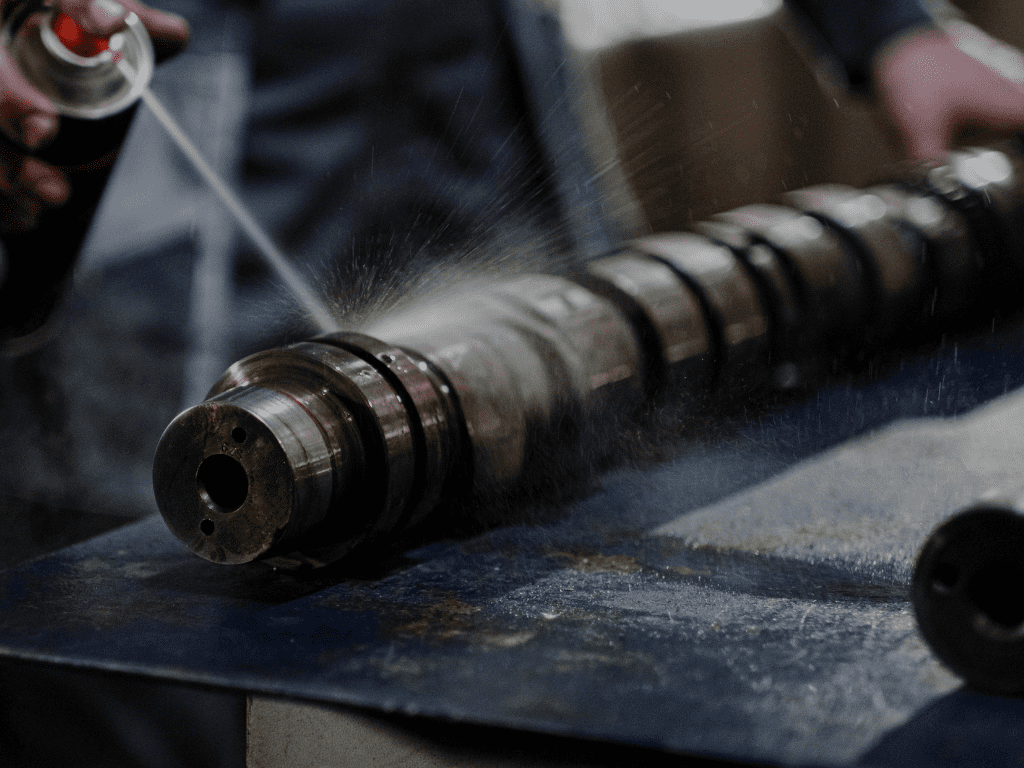Rust is one of the most notorious enemies of metal, and when it comes to fuel tanks, rust can wreak havoc on your vehicle’s performance. Rust in a fuel tank can lead to clogged fuel lines, reduced fuel efficiency, and even engine damage if left untreated. Cleaning rust out of a fuel tank is a critical maintenance task for anyone looking to keep their vehicle in optimal condition. In this comprehensive guide, we’ll explore the step-by-step process of cleaning rust out of a fuel tank, the tools and materials you’ll need, and how to prevent rust from forming in the future.
Understanding the Problem: Why Rust Forms in Fuel Tanks
Before diving into the process of cleaning rust out of a fuel tank, it’s important to understand why rust forms in the first place. Rust is the result of a chemical reaction between iron, water, and oxygen, known as oxidation. Fuel tanks, especially those made of steel, are susceptible to rust because they often come into contact with moisture, either from condensation or contaminated fuel. Over time, this moisture can cause the inside of the tank to corrode, leading to the formation of rust.
Tools and Materials Needed for Cleaning Rust Out of a Fuel Tank

To effectively clean rust out of a fuel tank, you’ll need the following tools and materials:
Protective Gear: Gloves, safety goggles, and a mask to protect yourself from chemicals and rust particles.
- Fuel Tank Cleaner: A commercial fuel tank cleaner specifically designed for rust removal.
- Acid-Based Rust Remover: Products containing phosphoric or hydrochloric acid are effective at dissolving rust.
- Vinegar or Citric Acid: Natural alternatives for rust removal.
- Steel Chains or Nuts and Bolts: These will help physically agitate and remove rust inside the tank.
- Pressure Washer or Garden Hose: For rinsing the tank after cleaning.
- Fuel Tank Sealer: To coat the inside of the tank and prevent future rust formation.
- Drain Pan: To collect any waste liquids.
- Flashlight: To inspect the inside of the tank.
- Compressed Air: For drying the tank thoroughly.
Step-by-Step Process for Cleaning Rust Out of a Fuel Tank
Step 1: Remove the Fuel Tank
The first step in cleaning rust out of a fuel tank is to remove the tank from the vehicle. This process will vary depending on the make and model of your vehicle, but generally involves disconnecting the fuel lines, electrical connections, and mounting brackets. Make sure the tank is empty before removal to avoid spills.
Step 2: Inspect the Tank
Once the tank is removed, use a flashlight to inspect the inside for rust and other debris. This inspection will help you determine the severity of the rust and whether the tank can be cleaned or needs to be replaced.
Step 3: Mechanical Rust Removal
For tanks with significant rust, start by mechanically removing the loose rust. Add a handful of steel chains, nuts, or bolts into the tank. Seal the openings and shake the tank vigorously. The metal pieces will act as abrasives, knocking loose the rust inside. After shaking, pour out the debris and inspect the tank again.
Step 4: Chemical Rust Removal
Next, it’s time to chemically clean the rust out of the fuel tank. There are two primary methods: using a commercial rust remover or a DIY solution like vinegar or citric acid.
Using a Commercial Rust Remover:
- Pour the rust remover into the tank, following the manufacturer’s instructions regarding the quantity.
- Seal the tank and let it sit for the recommended amount of time. This could range from a few hours to overnight, depending on the product and the extent of the rust.
- Shake the tank periodically to ensure the solution covers all surfaces.
- After the soaking period, drain the solution into a drain pan.
Using Vinegar or Citric Acid:
- Mix a solution of vinegar or citric acid with water (usually a 1:1 ratio).
- Pour the mixture into the tank and seal it.
- Let it sit for 24 to 48 hours, shaking occasionally.
- Drain the tank and dispose of the solution properly.
Step 5: Rinse the Tank
After chemically cleaning rust out of a fuel tank, it’s crucial to rinse it thoroughly to remove any residual chemicals or loose rust. Use a pressure washer or a garden hose to flush out the tank. Make sure to rinse multiple times until the water runs clear.
Step 6: Dry the Tank
Drying the tank thoroughly is essential to prevent new rust from forming. Use compressed air to blow out any remaining water. You can also leave the tank in a warm, dry area to air dry. Ensure that no moisture is left inside before proceeding.
Step 7: Apply a Fuel Tank Sealer
To prevent rust from returning, apply a fuel tank sealer. This coating will protect the metal from moisture and future corrosion. Follow the manufacturer’s instructions for applying the sealer, ensuring it covers the entire interior surface of the tank.
Step 8: Reinstall the Fuel Tank
Once the sealer has cured, reinstall the fuel tank in your vehicle. Reconnect the fuel lines, electrical connections, and mounting brackets. Fill the tank with fresh fuel and check for any leaks.
Preventing Rust in Fuel Tanks

While cleaning rust out of a fuel tank is effective, prevention is always better than cure. Here are some tips to prevent rust from forming in your fuel tank:
- Keep the Tank Full: A full tank reduces the amount of air (and therefore moisture) inside the tank, minimizing the risk of rust formation.
- Use Fuel Stabilizers: Additives like fuel stabilizers can help prevent moisture buildup and protect against corrosion.
- Regular Maintenance: Periodically inspect the fuel tank for signs of rust or corrosion and address any issues promptly.
- Store Vehicles Properly: If storing your vehicle for an extended period, use a fuel stabilizer and keep the tank full to prevent condensation.
Troubleshooting Common Issues
When cleaning rust out of a fuel tank, you may encounter some challenges. Here’s how to address them:
- Stubborn Rust Patches: If certain areas of the tank have particularly stubborn rust, try a second application of the rust remover or use a more concentrated solution.
- Leakage During Cleaning: If you notice any leaks while cleaning the tank, stop immediately and inspect the tank for holes or cracks. Small holes can be patched, but larger ones may require the tank to be replaced.
- Residual Odors: After cleaning rust out of a fuel tank, some chemical odors might linger. Rinsing with a baking soda solution can help neutralize these smells.
The Environmental Impact of Cleaning Rust Out of a Fuel Tank
Cleaning rust out of a fuel tank involves the use of chemicals that can be harmful to the environment if not disposed of properly. Always follow local regulations for disposing of hazardous waste, including rust removers and contaminated water. Consider using biodegradable or less toxic alternatives like vinegar or citric acid when possible.
Why AQUAQUICK 2000 is Ideal for Cleaning Rust Out of a Fuel Tank?
Rust in a fuel tank can lead to a range of issues, from decreased engine performance to potential damage. When it comes to cleaning rust out of a fuel tank, choosing the right product is crucial. AQUAQUICK 2000 has emerged as a standout choice for this task, thanks to its advanced formulation and numerous benefits. In this article, we’ll explore why AQUAQUICK 2000 is ideal for cleaning rust out of a fuel tank and how it can help restore your tank to optimal condition.
What is AQUAQUICK 2000?

AQUAQUICK 2000 is a specialized rust removal solution designed for cleaning and decontaminating metal surfaces, including fuel tanks. It combines advanced chemistry with user-friendly application to tackle rust and corrosion effectively. The product is known for its efficiency, safety, and environmental friendliness, making it a preferred choice for many vehicle owners and mechanics.
Advanced Formulation for Effective Rust Removal
One of the key reasons AQUAQUICK 2000 is ideal for cleaning rust out of a fuel tank is its advanced formulation. The product uses a combination of chelating agents and powerful rust dissolvers. Chelating agents bind to metal ions, making them easier to remove, while rust dissolvers break down the rust itself. This dual-action approach ensures that even the most stubborn rust is effectively cleaned from the tank’s interior.
The formulation of AQUAQUICK 2000 is designed to work on various types of rust, whether it’s light surface rust or more severe, flaky corrosion. Its ability to adapt to different rust conditions makes it a versatile solution for different levels of contamination in fuel tanks.
Safe for Use in Fuel Tanks
When cleaning rust out of a fuel tank, safety is paramount. AQUAQUICK 2000 stands out because it is formulated to be safe for use in fuel tanks. Unlike some rust removers that can be harsh and potentially damage the tank’s internal components, AQUAQUICK 2000 is gentle yet effective. It is designed to be compatible with the materials used in fuel tanks, ensuring that it does not cause any adverse reactions or damage.
Moreover, AQUAQUICK 2000 is non-flammable and non-toxic, making it safer for both users and the environment. This safety profile is especially important when dealing with fuel tanks, as it reduces the risk of hazardous situations during the cleaning process.
Environmentally Friendly Solution

Environmental considerations are increasingly important when choosing cleaning products. AQUAQUICK 2000 is formulated with environmental safety in mind. It contains biodegradable ingredients that break down naturally, minimizing the impact on the environment. Additionally, the product does not contain harsh chemicals that can be harmful to aquatic life or soil.
By opting for AQUAQUICK 2000, you can be confident that you are using a product that aligns with best practices for environmental responsibility. This aspect makes it a responsible choice for those who are mindful of their ecological footprint.
Easy Application and Use
One of the standout features of AQUAQUICK 2000 is its ease of application. The product is designed to be user-friendly, requiring minimal preparation and effort. The process typically involves pouring the solution into the fuel tank, allowing it to work for a specified period, and then rinsing it out. This simplicity is a significant advantage for both DIY enthusiasts and professional mechanics.
AQUAQUICK 2000 also comes with clear instructions and guidelines, making it easy to achieve effective results without requiring specialized knowledge or skills. This straightforward approach allows users to clean rust out of a fuel tank efficiently, saving time and effort.
Long-Lasting Results
Cleaning rust out of a fuel tank is not just about removing the visible corrosion; it’s also about preventing future rust formation. AQUAQUICK 2000 helps to achieve long-lasting results by effectively dissolving rust and leaving the tank’s surface clean. After treatment, the tank is less prone to further rusting, as the solution removes not only the rust but also the contaminants that could promote future corrosion.
Additionally, AQUAQUICK 2000 often includes components that help neutralize remaining acids and prevent new rust from forming. This added layer of protection ensures that your fuel tank remains in good condition for an extended period after cleaning.
Versatility and Compatibility
AQUAQUICK 2000 is versatile and compatible with various fuel tank materials and designs. Whether you have a steel, aluminum, or other metal tank, AQUAQUICK 2000 can effectively clean rust without causing damage. Its compatibility with different tank materials makes it a one-size-fits-all solution for various vehicles and machinery.
This versatility extends beyond just fuel tanks. AQUAQUICK 2000 can also be used on other metal surfaces and components that suffer from rust and corrosion. This broad application range makes it a valuable addition to any maintenance toolkit.
Cost-Effective Solution

While there are many rust removal products on the market, AQUAQUICK 2000 offers a cost-effective solution for cleaning rust out of a fuel tank. Its effectiveness and ease of use mean that you can achieve professional-grade results without the need for expensive equipment or multiple treatments. The product’s concentration and formulation also ensure that you get good value for your money, as a little goes a long way.
Customer Satisfaction and Proven Performance
Customer reviews and testimonials often highlight AQUAQUICK 2000’s proven performance and high satisfaction levels. Users frequently commend its effectiveness in removing rust, ease of use, and the quality of results. Positive feedback from both DIYers and professionals reinforces the product’s reputation as a reliable choice for cleaning rust out of a fuel tank.
Many users report that AQUAQUICK 2000 has restored their fuel tanks to like-new condition, demonstrating its ability to handle even challenging rust problems. This track record of success adds to its appeal as a go-to solution for rust removal.
AQUAQUICK 2000 stands out as an ideal choice for cleaning rust out of a fuel tank due to its advanced formulation, safety features, environmental friendliness, ease of use, and long-lasting results. Its ability to tackle various types of rust while being safe for tank materials and environmentally responsible makes it a top choice for both professional mechanics and DIY enthusiasts.
By choosing AQUAQUICK 2000, you are investing in a product that delivers effective rust removal while ensuring the safety and longevity of your fuel tank. Its versatility, cost-effectiveness, and proven performance further solidify its position as a leading solution for maintaining clean and efficient fuel systems. Whether you’re dealing with a minor rust issue or a more severe case, AQUAQUICK 2000 offers a reliable and efficient way to restore your fuel tank to optimal condition.
Conclusion
Cleaning rust out of a fuel tank is an essential maintenance task that can extend the life of your vehicle and improve its performance. By following the steps outlined in this guide, you can effectively remove rust, prevent future corrosion, and ensure that your fuel system operates smoothly. Remember that regular inspection and maintenance are key to keeping rust at bay and avoiding costly repairs down the road. Whether you choose commercial products or natural solutions, the process of cleaning rust out of a fuel tank is a worthwhile investment in the longevity of your vehicle.
With the right tools, materials, and techniques, you can confidently tackle the task of cleaning rust out of a fuel tank, ensuring that your vehicle remains in top condition for years to come.














